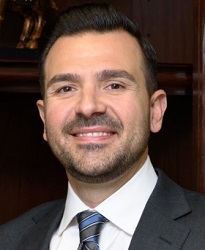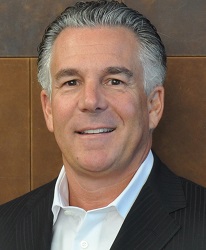HIGH POINT — Upholstery manufacturers, offshore and domestic alike, face cost pressures from transportation to raw materials to labor that necessitate charging more for their product.
Retailers had to deal with a couple of rounds of increases last year, often related to volatility in manufacturers’ costs for inputs such as foam and plywood, as well as freight surcharges on container orders.
Foam, in particular, keeps going up on a near-monthly basis of late, but a major factor right now is skyrocketing costs for shipping, both on the water and on the road, largely driven by capacity restraints from equipment such as containers and chassis that’s either short in supply or stuck in the wrong location.
Whether by surcharge or actual price increase, vendors say they need retailers to share more of that burden if manufacturers are to maintain anything approaching healthy margins.
Taking these rising costs on the vendor side on the whole, retailers can expect to see many of their suppliers instituting further price hikes if they haven’t already.
Transport trouble
Ocean freight, raw materials and labor shortages all have contributed to cost increases over the past several months for Parker House, but freight is the major cost issue by far.

Chris Lupo
“Seventy percent of our higher costs are attributable to ocean freight,” said Parker House President Chris Lupo, with raw materials followed by labor comprising the other 30%.
Transportation costs for ocean shipping and related surcharges can make a sofa that had retailed for $599 sofa go for $699, according to Manwah USA CEO Guy Ray.

Guy Ray
“Not only has ocean shipping’s cost increased so significantly, there’s a shortage of it,” he said. “Our supply chain hasn’t been impacted to the degree I hear from others; we pour our own foam, make our own mechanisms and motors. We can control most aspects of our business, but we can’t control the freight. Transportation alone has moved price points.”
He said that inputs such as material and labor contribute to cost increases, but even taken together, they have had nowhere near the impact at Manwah as have transportation and shipping costs.

Mike Campbell
Leather Italia’s peak-season surcharges and container rates for ocean freight both have risen upwards of 30% compared with a year ago, said CEO Michael Campbell. Plus, raw materials are averaging 25% ahead of last year, and while Leather Italia’s China factory is absorbing a lot of that to mitigate the amount of what retailers pay, it’s nowhere near to covering the costs.
“Freight cost has an effect that our industry just cannot control, and it is at an increased height that has not been seen before,” Campbell said. “Our goal is to measure every shipment and evaluate spot rates and different ports of entry in order to measure any realistic advantage for our retail partners.”
Flexsteel Inds. makes a lot of furniture stateside, but CEO Jerry Dittmer said during a conference call with analysts discussing the company’s fiscal second quarter results that roughly 65% to 70% of sales are derived from imported goods. He credited a supply chain imbalance for containers for an “egregious spike” in ocean freight rates.

Jerry Dittmer
“In some instances, we are now paying three times the amount of ocean transportation that we did prior to COVID-19,” Dittmer said. “Unfortunately, this is a global issue and not just one that is confined to just Flexsteel or our industry. It’s also not clear how soon the supply chain imbalance for containers may be resolved.”
On the domestic front
Logistical costs skyrocketed for domestic manufacturers, with some citing shipping — both inbound to production facilities and out to retailers — as their largest area of expense increase.

Peter Zolferino
“Transportation is the No. 1 expense for us at this point,” said Omnia Leather CEO Peter Zolferino. “We’re bringing in leather from Italy, South America and North Carolina, and our freight costs have doubled.
“Labor is No. 2,” he continued. “We’re in Southern California, so we had the minimum wage go up 7% last year. We’re looking to hire more skilled workers, and it’s definitely an employee market. Our labor this year is up 12% from a year ago. It’s the nature of the beast right now.”
Raw materials, particularly plywood, are major cost impacts at motion manufacturer Homestretch.

Skipper Holliman
“The biggest percentage increases are certainly in plywood for frames,” CEO Skipper Holliman said. “Those are up 60% compared with a year ago. We’ve also had multiple increases in foam, and that’s up in the 15% to 20% range, depending on who you’re buying from.”
Homestretch also imports kits and mechanisms.
“If you’re in a situation where you have to have a container, that’s double what the normal rate is to get it here,” Holliman said. “If it’s a shipment we can do without right now, we can wait some weeks and not pay as much, but if you have to have it, you have to pay.”
Transportation, raw materials and labor all are “much higher” at Vanguard Furniture than a year ago.

Andy Bray
“It’s hard to say what exactly is causing the prices to increase, but, whenever demand outstrips supply, prices always go up,” said President Andy Bray. “Because most furniture manufacturers are good negotiators when supply exceeds demand, price increases up until now have been nominal.”
Bottom line
Whether through freight surcharges and temporary increases related to raw material cost spikes or actual increases in catalog prices, retailers had best be prepared to pay more this year for the goods they sell.
“We had a significant price increase in fall around 5%,” said Manwah’s Ray, and that’s on top of consistently passing along a portion of freight surcharges in recent months. Another 5% increase for both MW Home and Cheers goods will take effect in March.
“We’ve still borne the brunt of most of these cost increases we’ve had,” Ray said. “For the most part, I think our customers trust us that what we’re telling them is true, is legitimate and necessary. Even with these price increases our margins are shrinking dramatically.”
Homestretch is taking increases through surcharges, mostly tariff-related, vs. price list increases, but Holliman said it’s charging 4% more on average compared with January last year. How and when the cost to customers will continue to rise remains to be seen.
“It’s hard to say at this point, we’ve certainly gone up a couple of times and then back down” due to fluctuations on tariffs, he said. “There’s certainly momentum for higher price increases.”
Vanguard took a “modest” price increase in January.
Bray said the company “is taking a ‘wait and see’ position until we have a better understanding of the resulting bill of materials, and don’t rule out taking another price increase if necessary, later in the year.”
Leather Italia USA implemented an average price increase of 2.5% over the past year and has no plans on any further price increases, said Campbell, adding that of the company’s top-selling models and third-quarter introductions did not increase in price.
Parker House has not increased warehouse prices, going instead with surcharges related to significant fluctuations in ocean freight costs. Once ocean freight stabilizes, Lupo expects there will be a 5% to 8% increase for goods out of domestic warehousing.
“As for containers, we are working with all our factories to keep the increase to a maximum of 2% to 5%, with some items not increasing at all,” he added.
Omnia Leather raised prices on some specialty items last year, but has just instituted price increases of 3% to 5% that went into effect in January.
“Lumber and foam have been big increases we’ve had to absorb,” Zolferino said. “There’s a shortage in those raw materials because the demand is so high right now.”
Flexsteel took pricing actions in November, but transportation rates have continued to increase since then, and the company sees additional increases from suppliers of both materials and finished goods.
“But there is a lag from the time that we announced pricing to the time we work through our backlog and we actually realized that,” COO and CFO Derek Schmidt said in the conference call. “So in most cases, that’s a two- to three-month lag on the manufacturing side.”
Dittmer noted that Flexsteel’s price increases aren’t covering the rises in costs and the company will continue to consider price movement.
“We used to look at pricing actions once a year, now we look at them once a week, and we’re going to continue to look at them the best we need to,” he said, adding that hopefully extras such as surcharges will diminish as the freight situation in particular stabilizes.
Ray at Manwah said price increases are unavoidable in the current environment, especially if retailers expect manufacturers to maintain quality levels.
“It’s not a money grab; these increases are out of necessity,” he said. “We aren’t gaining one point of margin, and we aren’t going to re-engineer product to hit a lower price point. We’re not decreasing the amount of steel, the amount of wood in the frames. We haven’t done one thing to lower the integrity of the product to save on price.”


